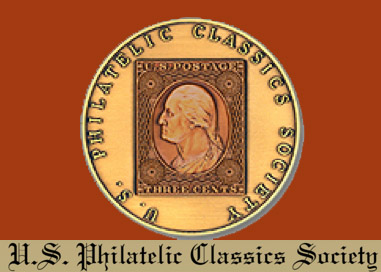Acknowledgments:
Robin Lund
Of course, acknowlegements MUST begin with Rob Lund and his Complete Plating of the 3¢ U.S. Imperforate Stamp of 1851 - 1857. Without Rob's incredible achievement, there was nothing for me to work with. Thank you Rob for being so supportive and answering all my questions.
The Platers
Platers who have achieved the complete plating of this issue are few. They deserve our recognition and honor. My "educated guess" of those who have achieved the complete plating include the following:
- Dr. Carroll Chase (more than one complete plating)
- Tracy W. Simpson
- Leo J. Shaughnessey
- A. S. Wardwell
- Richard Cabeen
- Richard Hicks
- Dr. Gerald B. Smith
- DeVere Card (his plating currently exists)
- Willard Amonette
- Richard C. Celler (his plating currently exists)
- Robin Lund (his plating currently exists)
Robert J. Lampert
Bob Lampert began mentoring me early in my journey with this stamp. He has been my valued sounding board during this process of turning spreadsheets into a web site. Bob's insight into the wide world of plating and his willingness to share everything he saw with nothing held back was appreciated more than he likely knows. I have enjoyed immensely our long phone conversations over the gory details of all the data table worksheets. Bob is also an expert on color and really sped up my learning curve on many issues. Thanks Bob for being there to support me!
Richard C. Celler
Dick Celler passed away in 2021 from cancer. He was a treasured resource and always responded within hours to every single one of my novice emails with valuable information that helped me learn. Dick stands high above as the Grand Master of all things plating. Thanks Dick for all your expertise on display for all of us.
Dr. Carroll Chase
A 374 page book on a single stamp? What's that all about? That is what got me hooked on this plating thing when I returned to stamps after too many years. Sure, I was tackling my U.S. Classics collection; but, working on this massive jigsaw puzzle hit all my buttons. It had order, analysis, art, history, potential completion, reasonable rarity, and would not be an entire waste of time. It provided me a practical reason to learn how to build a web site. This is a great hobby! How the stars aligned when Dr. Chase was ill and trying to fill his time with this stamp must be a very interesting story. But, this whole thing really appealed to me. Thank you Dr. Carroll Chase for starting it all.
DeVere Card, Mark Friedman, David Watt, Bill Amonette, Dick Celler (Again) and others
DeVere Card, Mark Friedman, David Watt, Dick Celler, Bill Amonnette, and others I am sure, stewed over the notion of Plating Systems for years. I have seen the correspondence about "computerizing the process." With today's technology, once the work of evaluating each stamp is done, presenting the results is easy to achieve. I believe the real value of this web site will be version 2.0, which will launch the first solutions to the "ADDITIONAL ANALYSIS" goals of this web site. All of the aforementioned have great ideas for different ways to look at these stamps and help platers plate them faster and easier. All of their ideas are readily transferable to this web site. It just takes more hours of heavy lifting to get the job done. I intend to begin that during 2018; but, I wanted to launch this "Version 1.0" to show the beginnings of a process of growth. Thanks all!
Richard Celler (One more time) and Elliot Omiya
Dick and Elliot's work on reliefs is just amazing. I have read their articles many times and each time something new sticks. Thank you for doing this research and explaining it so well.
The U.S. Philatelic Classics Society, American Philatelic Research Library, and the Smithsonian National Postal Museum
I relied heavily on many resources from the USPCS, rare information from APRL, and the Chase Photos from the Smithsonian National Postal Museum. Hopefully, I have done them all some justice with this educational study of the 3¢ imperforate stamp. Thank you very much for your resources. Links to these amazing organizations are below:
- U.S. Philatelic Classics Society (USPCS) Please JOIN today. You will be amazed at what you will learn!!
- American Philatelic Research Library (APRL)
- Smithsonian National Postal Museum
About Me
June 2015, I returned to stamps after a 42 year hiatus. After plowing through my long untouched storage boxes, stamps stuck again - and with a passion. The online auctions and research resources, nonexistent in 1973, had a lot to do with that. In the Fall of 2016 I got very interested in the 3¢ plating and wanted to learn to program a web site as well as see how far I could take my excel worksheets with the data. Here it is. Other than that, I am an aging baby boomer, ex-rock drummer, ex-CPA, active small business owner, husband/father/grandfather, and now classic U.S. stamp guy living on the Oregon Coast during the Spring-Summer-Fall and San Jose del Cabo during the Winter.
Resources:
Throughout this study, I do not believe I have added ANY new knowledge; however, I have certainly encountered an amazing amount of existing information. Gathered here are important items that helped me understand this stamp. Please note there is some duplication of information from other sections of this study:
Data Tables:
This link provides you a downloadable Excel Workbook with multiple worksheets providing Plating Details For All 2,600 Positions and detailing the evolution of Chase to McDaniel version 1 and McDaniel version 2 plating information. Some of the more important worksheets included within the workbook are described below:
1. "Chase", which presents both the Summary Tables of Plating Characteristics and line detail for each of the 2,600 stamps and the 3,311 related recuts published by Chase;
2. "McDv1", which presents both the Summary Tables of Plating Characteristics and line detail for each of 2,600 stamps and the 3,431 net related recuts published in the first series of Condensed Plating Information between 1973 and 1977;
3. "CURRRENT PLATING - McDv2", which presents both the Summary Tables of Plating Characteristics and line detail for the current (to my knowledge) state of the 3,486 recuts published in the second series of Condensed Plating Information articles between 1992 and 2006;
4. "Detailed Changes to Chase", which presents both the Summary Tables of Plating Characteristics and line detail for each of the 2,600 stamps with only the changes to Chase from both McDv1 and McDv2 identified; and,
5. "Condensed Changes to Chase"; which presents only those stamp positions that changed during from Chase's original work and today.
This workbook is downloadable in a protected file. If your really want an unprotected Excel workbook, please contact me directly to discuss.
Finally, this table is the most concise representation of each of the 2,600 positions, and works just fine as a quick and simple data source for the plating. It has a small fraction of the information included in the workbook: Download this pdf
The 3c Stamp of the United States 1851-1857 Issue, by Dr. Carroll Chase:
Dr. Chase's bible of the 3¢ stamp is now Public Domain digitized by Google and downloadable at Hathitrust.org





